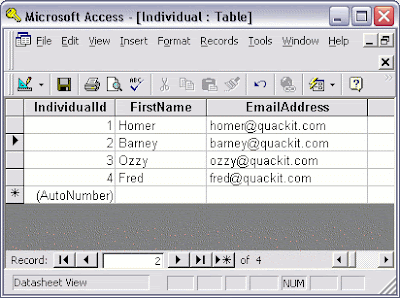- Accuracy: Valid postcode, name spelt correctly
- Completeness: Do we have a complete address
- Consistency: Have the same information for each person
- Uniqueness: An entity only appears once
- Timelines: Is the information current
2. Define the relationship between a database and a database management system.
- Database: Heart of an organisation, stores key business information, and is a structured collection of related data
- Database management system: The system that enables us to run queries, produce reports and manage data.
3. Describe the advantages an organisation can gain by using a database.
- Increased flexibility
- Increased scalability and performance
- Reduced information redundancy
- Increased information integrity (quality)
- Increased information security
4. Define the fundamental concepts of the relational database model.
Uses a collection of tables so that data doesn’t have to be reorganised but still accessed easily and in many different ways, as tables can talk to each other creating a relationship.

Image from:
http://www.novixys.com/Exult/Relationships_1021_01.jpg
5. Describe the benefits of a data-driven website.
- Increased customer satisfaction
- Content management
- Future expandability
- Minimising human error
- Cutting production and update costs
- More efficient
- Improved stability
6. Describe the roles and purposes of data warehouses and data marts in an organization
- Data warehouse: supports business decisions and analytical like activities through the logical collection of information which is gathered from various different operational databases. Its main purpose is to gather all the information in an organisation and put it in a single database for decision-making purposes.
- Data mining: Enables organisations to run queries and create reports on different items that aren’t alike.


No comments:
Post a Comment